When Will from ShinyPrints contacted me, asking if I was interested in doing a product review of their prints, I jumped at the chance.
I provided a high-resolution photo to Will, and received the metal print in the mail just under three weeks later, shipped from Florida, USA, to me in Western Australia.
I can't comment on ShinyPrints' web-based image submission system, as I didn't use it, but emailed the photo instead.
Shipping details were emailed to me, so I could track the location of the print while it was in transit.
The photo I selected is of a blue and yellow macaw, photographed at the Bali Safari and Marine Park last year.
I chose this photo because it has some bright colours, contrast, areas with detail, and some interesting bokeh in the background. This would provide an opportunity to get a good indication of the colour and contrast rendition of the photo on a metal print.
I was impressed with the packaging - the metal print was encased in bubble wrap, then in a solid cardboard wrap, and then in a larger box with padding. The robust packaging ensured the metal print arrived in pristine condition.
The photos below were taken as I unpacked the print - so check them out to see how well it was packaged.
Once I had unpacked the metal print, my first impressions were that the colour reproduction of the metal print was bright and accurate, there was plenty of detail in the image, and it looked very pleasing to the eye.
A closer examination revealed that the print is using what ShinyPrints refer to as their "box mount" (they offer multiple mount and backing options), which consists of an aluminium "box" attached to the rear of the print with double-sided tape. The "box" has a hole for hanging on the wall, and each corner has a rubber bumper to prevent the aluminium from marking the wall. The box mount results in the print being about 20mm off the wall.
The aluminium panel that the image is on is actually quite thin - probably about 1mm thick. As a result, if you are not careful when handling the print, it would be relatively easy to bend this panel. Due to the great packaging, the chances of damage during shipping should be very low, and once the print is hanging on your wall, it should be relatively safe from such damage.
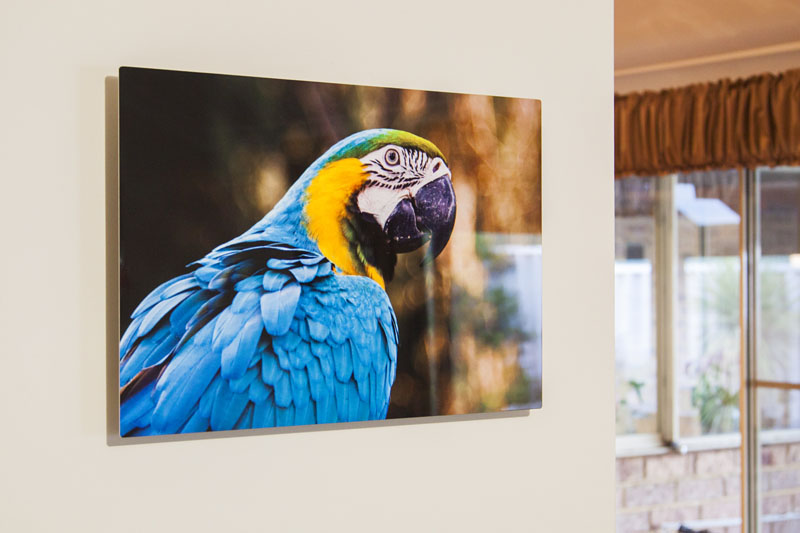
I noticed that the shiny surface of the metal print is very bad for finger prints, although they cleaned off reasonably easily with a soft cloth. Handling the print by its edges allows you to avoid the issue of fingerprints - as demonstrated by one of my sons below.
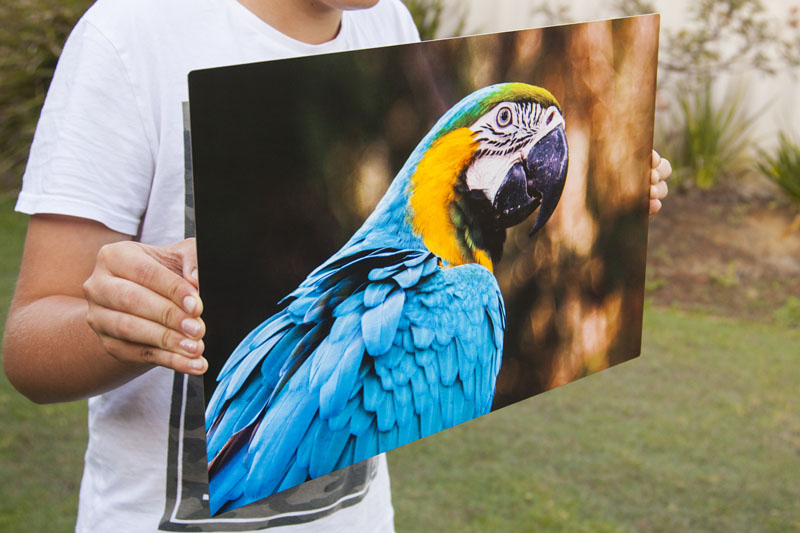
ShinyPrints are a speciality lab in Florida, USA, that only do metal prints, and claim to have the best equipment possible for making the metal prints. They use chromaluxe aluminium panels made especially for dye sublimation printing, and F-series Epson printers to ensure high-quality results.
There are a number of options to consider when getting a metal print from ShinyPrints. They offer multiple mount and backing options:
- box mount - an aluminium "box" on the rear of the print, keeps the print about 20mm off the wall
- float mount - a rectangular 25mm aluminium tube attached to the rear of the print, keeps the print 25mm off the wall, and typically used for larger prints
- frame mount - an upgrade from the float mount with a slightly better appearance
- edge mount - a slightly thicker frame that mounts to the edge of the print
- tuxedo mount - a ~6mm backing on the print for looks, with a frame mount
- white gloss - the photo is printed on a glossy white finish
- white matte - the photo is printed on a matte white finish
- clear gloss - the photo is printed on clear gloss aluminium, so the aluminium colour will show up in all white portions of the image
- clear matte - the photo is printed on clear matte aluminium
It would be nice if the ShinyPrints website would show examples of the different surface options, to allow people to better understand the differences. Apparently a major overhaul of the website is planned, and will show better visuals and explanations of the mounts and surface options.
While reading through the FAQ on ShinyPrints' website, I learned that they don't actually print onto the aluminium itself. The dye sublimation process involves printing the image on transfer paper, and then pressing it onto the aluminium panel under high temperature, which causes the ink to be absorbed into the aluminium panel's polyester coating. Apparently the dye sublimation process provides higher definition and better quality prints than printing directly onto the aluminium.
In addition to the appeal of a metal print mentioned in the opening paragraph, ShinyPrints' metal prints are also waterproof, scratch-resistant, and will outlast other types of prints. Being metal, they can also be hung in high-moisture areas, such as a bathroom, where you wouldn't want to hang a wood-framed print or a canvas print.
ShinyPrints pride themselves in providing high-quality metal prints - so if you have been considering getting a metal print, I can highly recommend ShinyPrints.
ShinyPrints provided this metal print at no cost for review purposes.
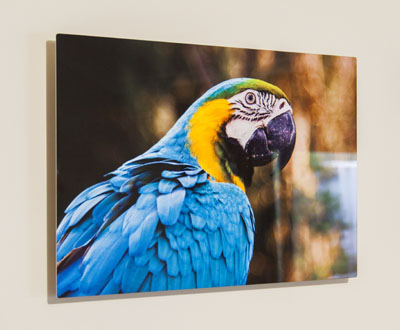
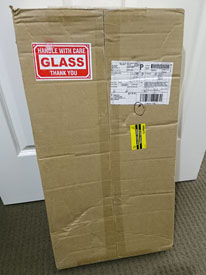
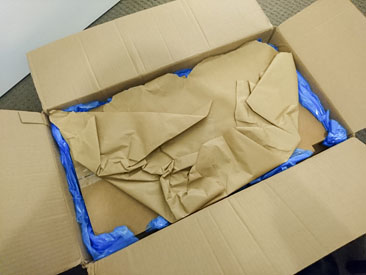
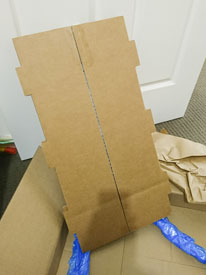
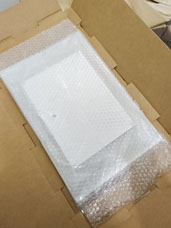
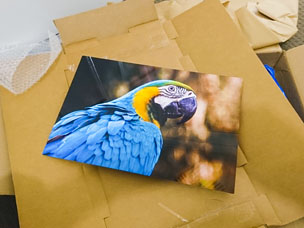
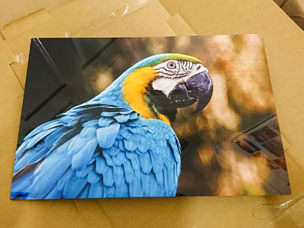
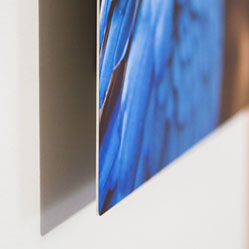
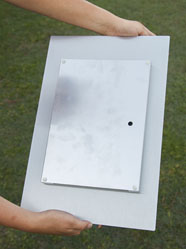
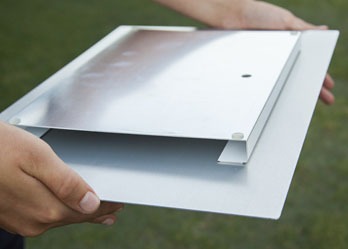
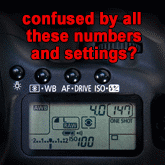


This is an interesting concept, and printing on metal is not something I've come across before. A few questions that other readers might be wondering about as well, and perhaps you can provide a bit more information on a couple of things:
1. COST: How much does a 12x18" print like you reviewed cost? And how does this compare with other types of prints?
2. VIVIDNESS/SHARPNESS: In the introduction you mentioned "Metal prints have appealed to me because of the vivid colour representation, the sharpness, and the robustness of something made of metal". Could you expand on to what extent it lived up to your expectations regarding vividness/sharpness? You did mention that the colour reproduction was "bright and accurate", but Were the colours more vivid and sharp than a standard print? If you've got any regular prints of the same photo, it would be interesting to see a side-by-side comparison.
3. WEIGHT: 1mm aluminium sounds reasonable, but how much does something like this weigh? Is it significantly heavier than a standard print, and how did that go in hanging it on a wall?
4. ADVANTAGES: I was fascinated to learn that it's a dye sublimination process that prints on to transfer paper first. So given that the process does involve printing onto paper first, I was curious whether the outcome produces a result that is more vivid or sharp than a regular print, and to what extent result that is superior to a normal print? Dye sublimination is also used to print on hard products like ceramics, and effectively reacts with the special coating that is placed on the ceramic or metal. So it would seem that the main advantage is an ability to print on a surface that otherwise couldn't be printed on, resulting as you say with a product that is waterproof and scratch proof. Would the water-proof/scratch-proof nature of the product be the main advantage here? Or is a novelty element part of the appeal? Or is the colour/sharpness genuinely something more attractive that a traditional print, that printing on metal is actually worth the (presumably) extra expense compared with a standard print?
Great review, thanks for all the effort you went to in doing a good write-up with photos, and this has made me aware of a product and service I would otherwise not have known about.